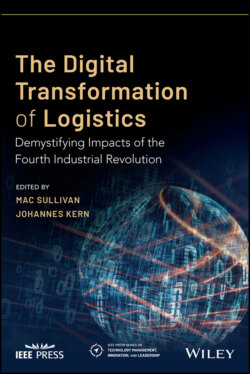Читать книгу The Digital Transformation of Logistics - Группа авторов - Страница 21
Current State of the Logistics Industry Effects of the Second and Third Industrial Revolutions on Logistics
ОглавлениеLogistics was born out of the need for military groups to travel efficiently around the world, and the term was borrowed by international trading companies as they looked to deliver their goods (Bonacich and Wilson 2011). The industry was further developed by the advent of the steam engine as its propelled cargo on trains and boats at faster paces. For this chapter, the term logistics will represent third‐party logistics (3PLs) or freight forwarding companies, who provide transportation, warehousing, and compliance support to the global trade network. Logistics is an industry built on relationships, information arbitrage, and strategic outsourcing from retailers and manufacturers of their transportation coordination needs to specialized companies that only do this in one form or another.
Logistics has transformed in terms of complexity as it moved from break‐bulk shipping into the containerized and air freight modes of transportation and now into an increasingly complex logistics network that is being constructed around consumer demand. The Third Industrial Revolution brought about a foundational shift in the levels of transparency available via Internet‐enabled computers that opened up new forms of competition for incumbent players as the amount of capital needed to be involved in the process decreased dramatically. Transparency led to more competition that result to lower margins on the supply side; however, at the same time, it also decreased the amount of manual labor needed that reduced costs (McKinsey&Company 2018).
